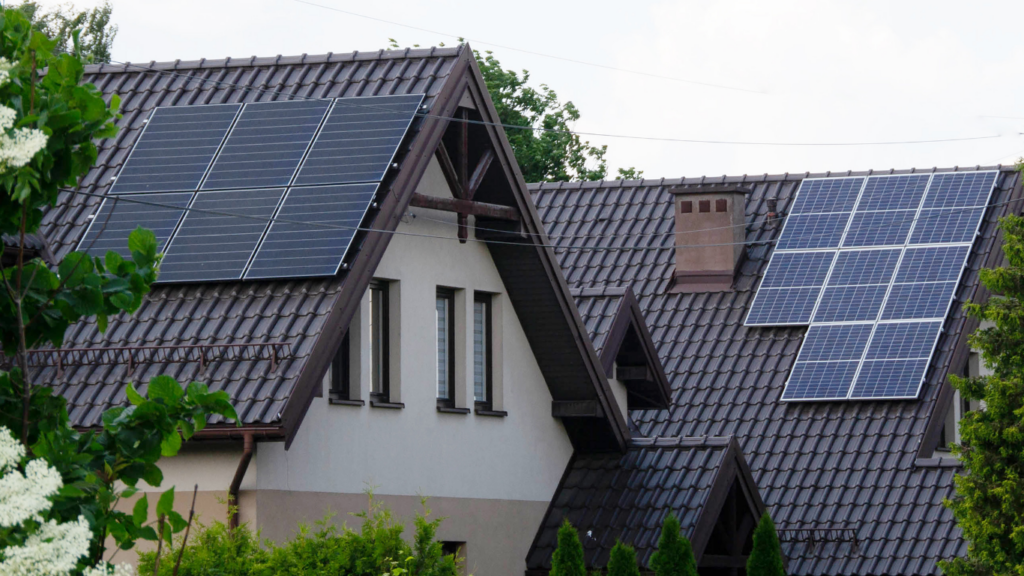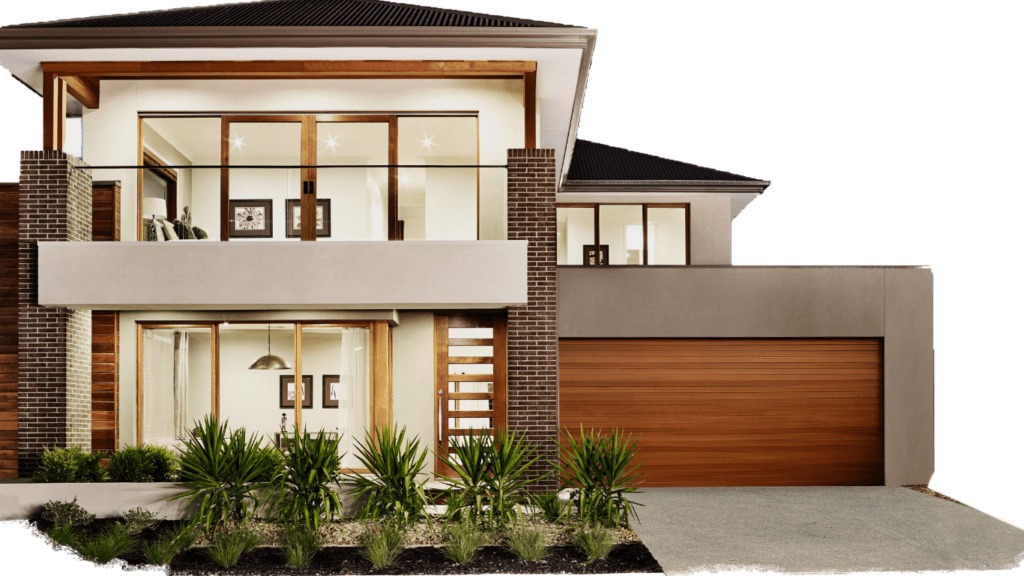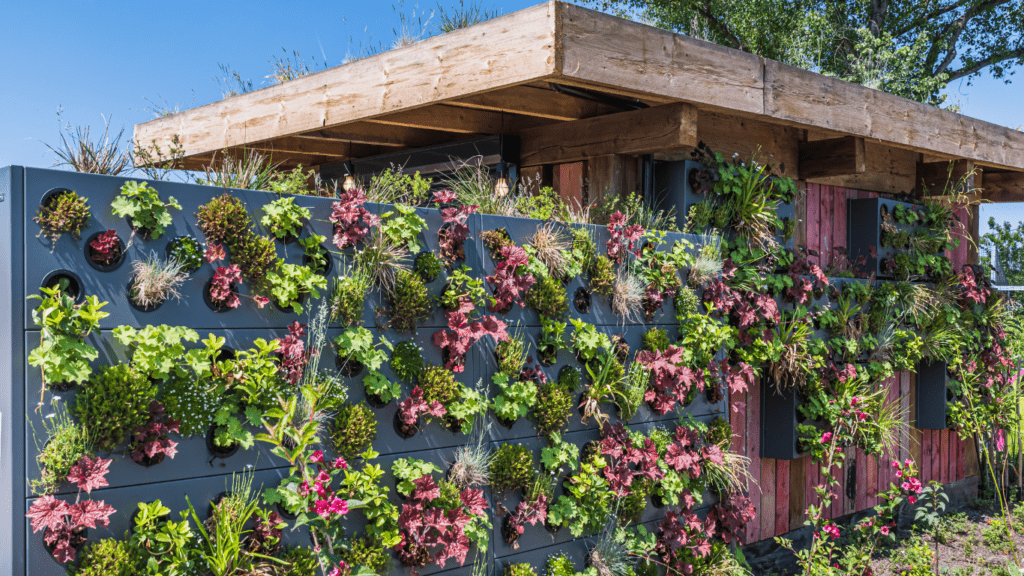Sustainable Exterior Design Trends: An Overview
Sustainable exterior design encompasses a range of eco-friendly materials and techniques that significantly impact both aesthetics and environmental responsibility. Using natural and renewable resources not only reduces carbon footprints but also enhances property value. Bio-based materials like bamboo and cork are gaining popularity because they grow quickly and are highly durable. Manufacturers source these sustainably, ensuring minimal environmental impact.
Reclaimed materials are another cornerstone of sustainable design. Reclaimed wood, brick, and metal are repurposed from old buildings and projects, reducing the demand for new raw materials and cutting down on waste. For instance, reclaimed wood can be reprocessed into siding or decking, giving homes a unique and classic look.
Green roofing techniques provide another layer of sustainability. These systems support vegetation, which helps insulate buildings, manage stormwater, and improve air quality. Extensive green roofs use lightweight plants like sedums, while intensive green roofs support shrubs and small trees. Installing a green roof can extend the lifespan of roofing materials by protecting them from the elements.
Energy-efficient exteriors play a crucial role in sustainable design. Utilizing solar panels, energy-efficient windows, and proper insulation reduces reliance on non-renewable energy sources. Solar panels convert sunlight into electricity, providing a renewable energy source. Energy-efficient windows reduce heat loss and gain, keeping interiors comfortable year-round.
Permeable paving solutions are also making headway. Traditional concrete and asphalt impede water absorption, contributing to flooding and water pollution. Permeable pavers, made from porous materials like gravel and certain ceramics, allow rainwater to seep through, replenishing groundwater and reducing runoff.
Homeowners are also turning to xeriscaping for sustainable exterior landscapes. This technique focuses on drought-resistant plants and efficient irrigation systems, conserving water and reducing maintenance needs. Native plants, which are well-suited to local climates, form the backbone of xeriscaped gardens.
By integrating these sustainable design trends, homeowners create aesthetical and functional exteriors that contribute to environmental well-being. Eco-friendly techniques and materials not only enhance curb appeal but also offer longevity and resilience. Embracing these trends fosters a sustainable future while increasing the overall value of properties.
Eco-Friendly Materials
Sustainable exterior design incorporates materials that minimize environmental impact while maximizing durability and visual appeal. Here are three key eco-friendly materials revolutionizing this space:
- Reclaimed Wood
Reclaimed wood is lumber repurposed from old structures, providing a unique, weathered look. It’s a sustainable option since it reduces deforestation and landfill waste. Homes built with reclaimed wood often have distinctive, rustic exteriors, adding both charm and character. You’ll find reclaimed wood in various applications, including siding, decking, and accent walls. Using it conserves resources and promotes a circular economy.
- Recycled Metal
Recycled metal, including aluminum and steel, offers an eco-friendly alternative for exterior design. This material’s strong, durable, and lightweight nature makes it versatile for roofing, siding, and fencing. Metal recycling saves significant energy compared to producing new metal. For example, recycled aluminum consumes 95% less energy than virgin aluminum production. Featuring recycled metal in your design not only reduces environmental impact but also provides a modern, industrial aesthetic.
- Natural Stone
Natural stone like granite, limestone, and slate serves as a robust, timeless choice for exteriors. It’s sourced from nature with minimal processing, making it a sustainable option. Stone’s durability ensures long-lasting facades, reducing the need for replacement and maintenance. Additionally, stone’s high thermal mass contributes to energy efficiency by regulating temperature extremes. Incorporating natural stone gives homes a sense of permanence and classic beauty, aligning with eco-friendly principles.
Innovative Building Techniques

Innovative building techniques are pivotal for achieving sustainable exterior designs. By integrating advanced methods, I can effectively minimize environmental impact and enhance the functionality and aesthetics of living spaces.
Green Roofing
Green roofing involves installing vegetative layers on roofs, transforming them into eco-friendly, energy-efficient spaces. These living roofs provide benefits like improved insulation, reduced stormwater runoff, and enhanced air quality. The vegetation helps regulate indoor temperatures, lowering heating and cooling costs throughout the year. Additionally, green roofs create green spaces in urban areas, contributing to biodiversity and overall environmental health.
Solar Panel Integration
Solar panel integration is key for constructing energy-efficient exteriors. By placing solar panels on rooftops or other strategic locations, I can harness renewable energy to power homes. Modern photovoltaic systems convert sunlight into electricity, drastically reducing dependence on non-renewable energy sources. Solar panels also offer long-term cost savings on energy bills and can increase property value.
Sustainable Landscaping
Sustainable landscaping utilizes eco-friendly practices to create outdoor spaces that require minimal resources. Techniques include:
- using drought-resistant plants
- implementing efficient irrigation systems
- incorporating permeable paving materials
Xeriscaping, for instance, focuses on selecting native plants that thrive in the local climate, reducing water consumption. These landscaping methods not only conserve water but also diminish the need for chemical fertilizers and pesticides, promoting a healthier environment.
By adopting these innovative building techniques, I’m able to develop sustainable exterior designs that protect nature while boosting the visual appeal and efficiency of homes.
Benefits Of Sustainable Exterior Design
Adopting sustainable exterior design in homes offers numerous advantages. It’s not only environmentally friendly but also brings economic and aesthetic benefits.
Environmental Impact
Sustainable exterior design significantly reduces the environmental footprint of a home. Using reclaimed materials, like wood and metal from old buildings, helps conserve natural resources and decrease landfill waste. Incorporating bio-based materials, such as bamboo and cork, ensures that these resources regenerate quickly and are sustainably sourced. Implementing green roofing techniques aids in stormwater management and air quality improvement. Energy-efficient solutions, like solar panels, reduce reliance on non-renewable energy sources.
Cost Savings
Homeowners enjoy substantial long-term cost savings with sustainable exterior design. Energy-efficient exteriors lower monthly utility bills by minimizing energy consumption. Solar panels can even generate surplus energy, which can be sold back to the grid. Durable materials, such as recycled metal and natural stone, require less maintenance and have longer lifespans, reducing replacement costs. Water-efficient landscaping practices, like xeriscaping, reduce water usage and decrease irrigation costs.
Aesthetic Value
Sustainable exterior design enhances the visual appeal of homes. Reclaimed wood and recycled metal add unique, rustic charm that can’t be replicated with new materials. Natural stone provides timeless elegance and durability, creating a sophisticated look. Green roofs and thoughtfully designed landscapes with drought-resistant plants enhance curb appeal, making homes not only attractive but also eco-friendly. By integrating these elements, homeowners can showcase their commitment to sustainability while boosting property value.
Challenges And Solutions
In the journey toward sustainable exterior design, several challenges often arise. However, viable solutions exist to address these obstacles effectively.
Material Sourcing
Sourcing eco-friendly materials can be challenging due to supply chain limitations. Reclaimed wood, for example, may require extensive searching and verification to ensure it’s genuinely sustainable and free from harmful treatments. Establishing partnerships with certified suppliers, dedicated to sustainable practices, is essential. Organizations like the Forest Stewardship Council (FSC) offer certifications that guarantee the sustainability of wood products. Using local materials also minimizes transportation emissions, further enhancing sustainability.
Initial Costs
While sustainable materials and technologies sometimes carry higher upfront costs, they lead to savings over time. Solar panels and energy-efficient windows, for instance, require an initial investment but significantly reduce utility bills in the long run. To mitigate the financial burden, I can explore tax credits, rebates, and financing options provided by government programs aimed at promoting renewable energy solutions. Additionally, choosing durable materials like recycled metal can result in lower maintenance costs, offering financial benefits over time.
Maintenance Concerns
Sustainable materials might require specific maintenance practices to ensure longevity. Reclaimed wood, for instance, may need regular sealing to protect against weathering. Homeowners can utilize eco-friendly sealants and finishes to maintain these materials responsibly. Green roofs, another sustainable option, demand periodic inspection and care to prevent vegetation overgrowth and leakage. By implementing a scheduled maintenance plan and using appropriate, sustainable products, I can effectively manage the upkeep of these eco-friendly choices without compromising their environmental benefits.



 Wesleyero McGill – Founder & CEO
Wesleyero McGill is the visionary behind Castle Shelf House, bringing over a decade of experience in home renovation and design. His passion for creating beautiful, functional spaces has led him to establish this platform, where he shares the latest trends in interior and exterior design. As Founder and CEO, Wesleyero is dedicated to offering expert advice on furniture placement, home styling, and renovation, helping homeowners transform their spaces with ease and confidence.
Wesleyero McGill – Founder & CEO
Wesleyero McGill is the visionary behind Castle Shelf House, bringing over a decade of experience in home renovation and design. His passion for creating beautiful, functional spaces has led him to establish this platform, where he shares the latest trends in interior and exterior design. As Founder and CEO, Wesleyero is dedicated to offering expert advice on furniture placement, home styling, and renovation, helping homeowners transform their spaces with ease and confidence.
